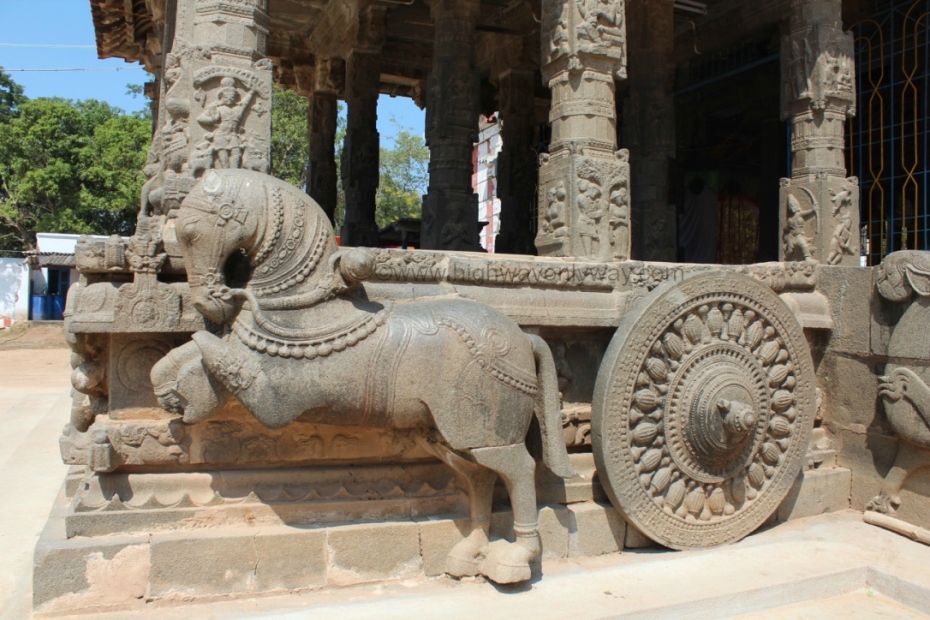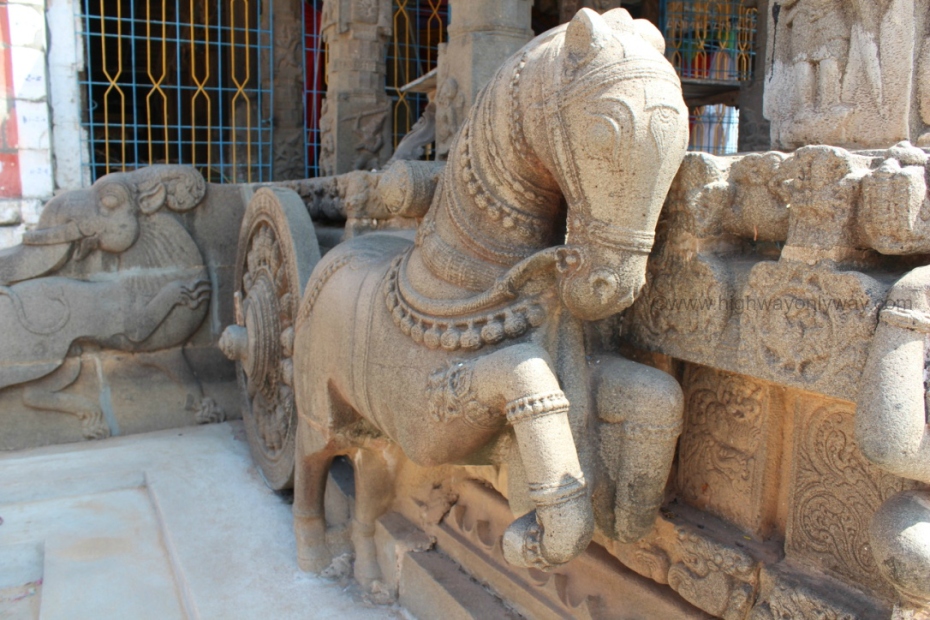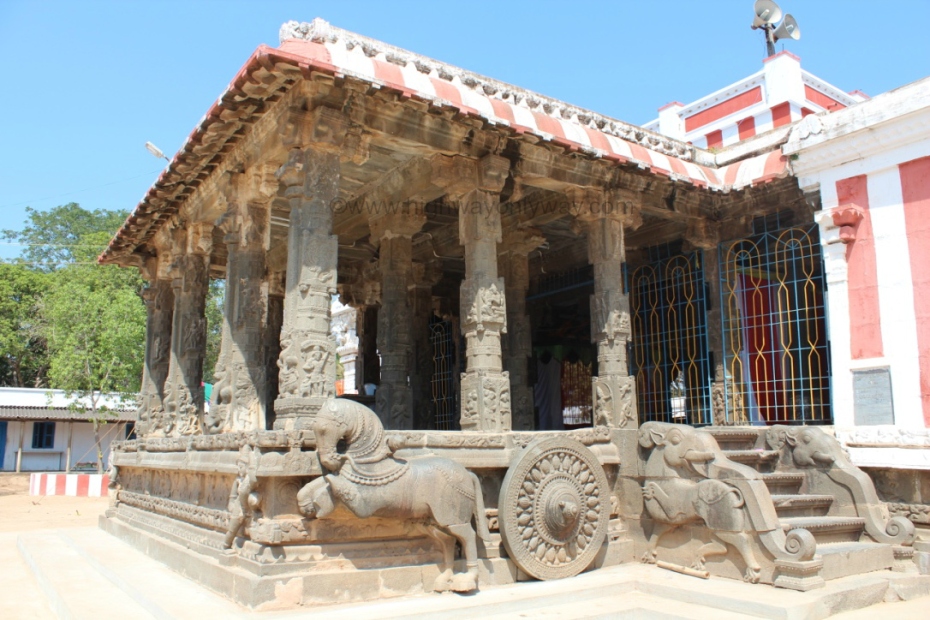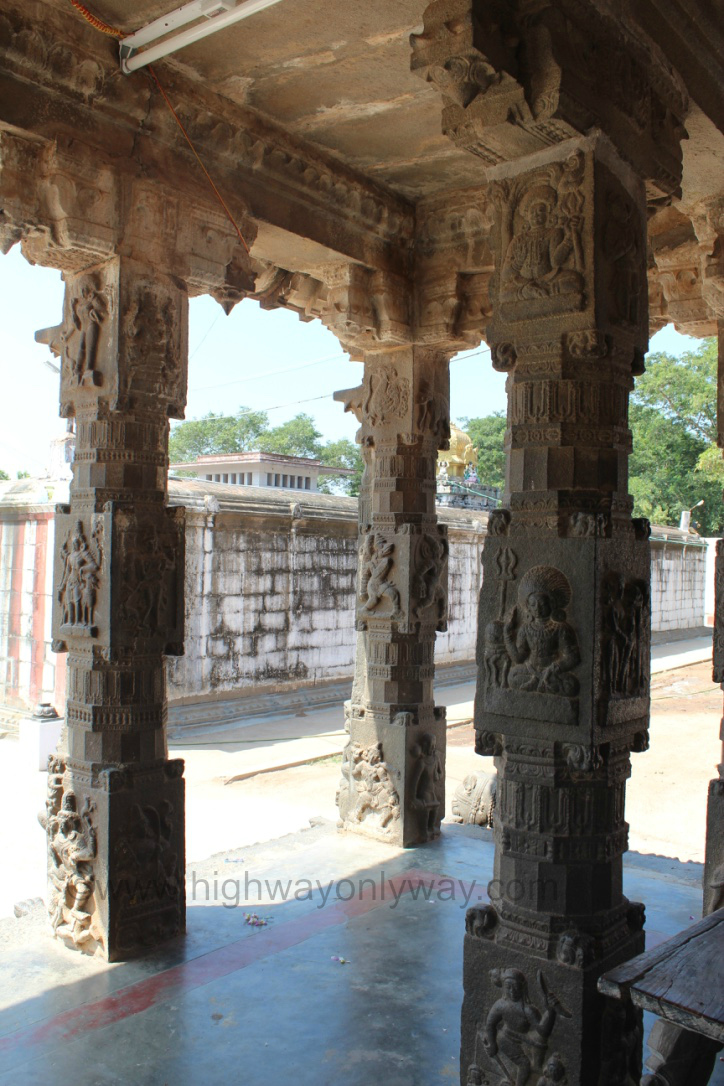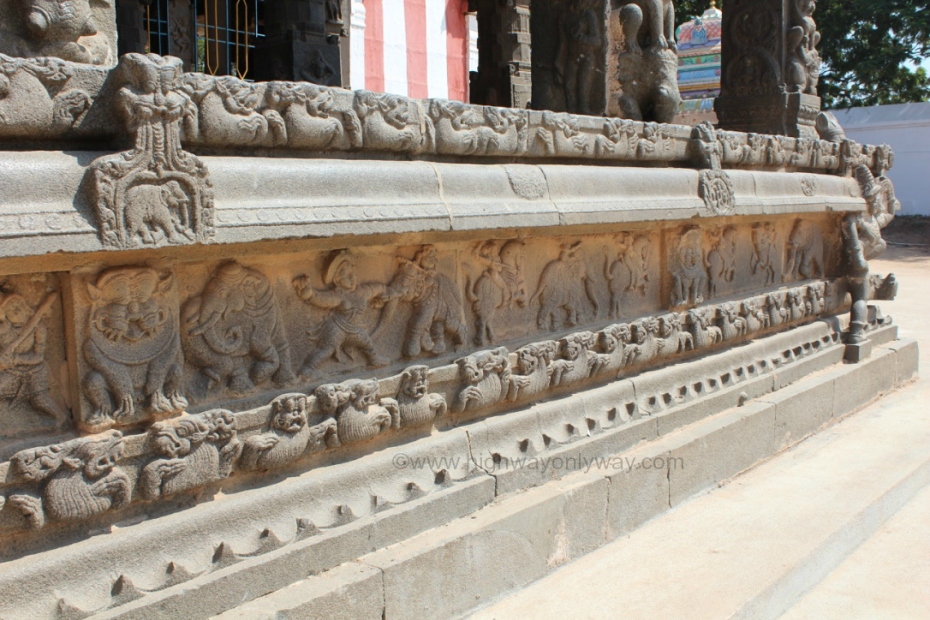
Undavalli (historically known as Anantasayangudi) - just the nondescript village in the Undavalli village panchayat located in Tadepalle mandal, Guntur district, Andhra Pradesh, India PIN 522501. It is the suburb of Vijayawada. The geographical coordinates of Undavalli are 16.4957° North (Latitude), 80.5800° East (Longitude). It has an average elevation of 24 m (79 ft). It is situated on the south bank of Krishna River. The village is connected to Vijayawada by Prakasam Barrage road and the nearest railway station is Krishna Canal railway station (2.9 km). Vijayawada junction railway station is 4,4 km from Undavalli. Undavalli is 22 km north west of Guntur City and 245.6 km away from Hyderabad, the state capital.. The other nearest state capitals from Undavalli are Mumbai (322.6 km), Chennai (379.5 km)., Bangalore (508.2 km) and Pondicherry (513.0 km),
Undavalli has several small caves and the well known has the four storey, one recessed above the other, with numerous sculptures and murals. The four storey cave is the wonderful engineering achievement and is considered as the most magnificent and substantial Hindu monument. The time-honored Undavalli Caves were supposedly sculpted from monolithic solid rock way back in 4th-5th century.
History of Vishnukundina Dynasty
Gabriel Jouveau-Dubreuil in his book "Pallava Antiquities" - Gabriel Jouveau-Dubreuil, V. S. Svaminadha Dikshita. (!917). AES Delhi prefers to call Undavalli a Shiva cave temple. His conclusions: "I do not think that the caves of Undavalli were dug by the Pallavas. On closely examining the sculptures, I have made a discovery which I believe will prove to be greatest importance in ascertaining the origin of these (cave) temples... My opinion, which is quite different is that the caves of Undavalli are the works of Vishnukundinas... The Vishnikundinas were the predecessors of Chalukyas in the Vengi country."
(If already known about Vishnukundinas please skip this para)
The Vishnukundina Empire (Telugu: విష్ణుకుండిన సామ్రాజ్యము) (420 - 624 A.D.), one of the Middle kingdoms of India, reigned the Deccan, Orissa and parts of South India. They carved land out from the Vakataka Empire. It played the vital part in the history of the Deccan during the 5th and 6th centuries A.D. Vishnukundina is a Sanskritized name for Vinukonda. Scholars made number of attempts to decipher the origins of this dynasty, yet no proper conclusions have been reached so far. The early rulers of Vishnukundina dynasty migrated to the west in search of occupation and under the Vakatakas they might have attained feudatory status. There are controversies in fixing the reign Vishnukundinaas. Some scholars might have fixed time between the end of the Salankayana and the rise of the Eastern Chalukyan power in 624 A.D.. Some historians point out the Vishnukundinas reign was from 420 to 624, while some other historian prefers to assign their reign from early 5th century to the 7th century. Indra Pala Nagara plates mention Indra Varma as the first ruler of the Vishnukundina dynasty. Madhav Varma II, who ruled for nearly half a century from the middle of the 5th century, is considered as the most efficient ruler and his reign was a golden age in the history of the Vishnukundinas.
History of Vishnukundina Dynasty
Gabriel Jouveau-Dubreuil in his book "Pallava Antiquities" - Gabriel Jouveau-Dubreuil, V. S. Svaminadha Dikshita. (!917). AES Delhi prefers to call Undavalli a Shiva cave temple. His conclusions: "I do not think that the caves of Undavalli were dug by the Pallavas. On closely examining the sculptures, I have made a discovery which I believe will prove to be greatest importance in ascertaining the origin of these (cave) temples... My opinion, which is quite different is that the caves of Undavalli are the works of Vishnukundinas... The Vishnikundinas were the predecessors of Chalukyas in the Vengi country."
(If already known about Vishnukundinas please skip this para)
The Vishnukundina Empire (Telugu: విష్ణుకుండిన సామ్రాజ్యము) (420 - 624 A.D.), one of the Middle kingdoms of India, reigned the Deccan, Orissa and parts of South India. They carved land out from the Vakataka Empire. It played the vital part in the history of the Deccan during the 5th and 6th centuries A.D. Vishnukundina is a Sanskritized name for Vinukonda. Scholars made number of attempts to decipher the origins of this dynasty, yet no proper conclusions have been reached so far. The early rulers of Vishnukundina dynasty migrated to the west in search of occupation and under the Vakatakas they might have attained feudatory status. There are controversies in fixing the reign Vishnukundinaas. Some scholars might have fixed time between the end of the Salankayana and the rise of the Eastern Chalukyan power in 624 A.D.. Some historians point out the Vishnukundinas reign was from 420 to 624, while some other historian prefers to assign their reign from early 5th century to the 7th century. Indra Pala Nagara plates mention Indra Varma as the first ruler of the Vishnukundina dynasty. Madhav Varma II, who ruled for nearly half a century from the middle of the 5th century, is considered as the most efficient ruler and his reign was a golden age in the history of the Vishnukundinas.
The blog post "Reign of Vishnukundin" dated January 13, 2011 speculates the relationship of Madhavavarma Pallava I with Vakatas since the Pallava prince married a Vatakata princess and they occupy the Vakataka areas of Srisailam after the demise of Vatakatas. So the speculation is that Mahendravarma Pallava I is related to Vatakatas and they are protege of Vatkatakas. As per a theory, proposed by G Jouveau-Dubreuil, Mahendravarman got the inspiration of the cave architecture from Undavalli and Bhairavakonda caves.
Initially the Vishnukundinas, the rulers of Vakataka empire were supporters of Buddhism and the Undvalli caves were excavated for purposes of Buddhist monastery. The vihara kind of cave architecture, later modified as Hindu shrine. Vishnukundinas were responsible for the modification of several rock cut caves dedicated to Lord Shiva. According to SR Ramanujan (The Lord of Vengadam. pp.23) the dates, to the caves at Bhairavkona, Mogalrajapuram, Vijayawada (Bezawada), Undavalli, were assignable to this period. The royal emblems of Vishnukundinas found in the caves suggest the contributions of Vishnukundinas.
Architecture
The east facing solid rock cut cave has the 29 m (95 feet) long and 16 m (50 feet) wide facade opening. The excavation has been carried inward to various depths leaving portions of three rows of massive square stone pillars partially excavated. The low level hall of the ground floor is supported by eight pillars and there are seven anganas (inter-space between pillars). The first floor houses three sanctum cells at the rear side of the cave. The pillared hall forms the front yard for each sanctum cell. The floor is dedicated to the Hindu trinity Lord Brahma, Lord Vishnu and Lord Shiva. The small shrine at the northern end houses the image of the attendant.
Architecture
The east facing solid rock cut cave has the 29 m (95 feet) long and 16 m (50 feet) wide facade opening. The excavation has been carried inward to various depths leaving portions of three rows of massive square stone pillars partially excavated. The low level hall of the ground floor is supported by eight pillars and there are seven anganas (inter-space between pillars). The first floor houses three sanctum cells at the rear side of the cave. The pillared hall forms the front yard for each sanctum cell. The floor is dedicated to the Hindu trinity Lord Brahma, Lord Vishnu and Lord Shiva. The small shrine at the northern end houses the image of the attendant.
On the parapet between the ground and the first floors there are large squatted lions and seated 'ganas'. There is a heavy projection above ground floor appearing window like Chaitya. The first floor has larger area and might have partitioned into four different chambers and the door placed on the dividing wall between third and fourth chamber seems to have been removed. Purpose is to merge both chambers into one. The 5.9 m (19.5 feet) square hall on the southern side (on your left side) is supported by four plain four sided pillars (two in the front and two in the back). A 3.048 m square (10 feet square) sanctum cell is built at the back. A tunnel has been formed for flow of water and the outlet channel has been cut under the middle of the threshold. The flight of eight steps leads to the shrine from the front hall. On the rock above is a frieze of elephants and lions.
The main (central) hall measuring 9.44 m (31 feet ) deep long and 8.83 m (29 feet) wide is found on the northern side (on your right side) and its roof height varies from 7 feet to 8 feet. The roof of this spacious hall is supported by 16 massive pillars sculpted with the upper brahma-kanta (square) the lower brahma-kanta (square) and kattu (octagonal shaft) in the middle. The square face of the pillars are sculpted with lotus arabesque medallions. At another square face the bas relief image of a man, his consort and the attendant is sculpted. The pillars are arranged in four parallel rows. The rear end pillars found weak and dilapidated. At the rear side there is a square shaped sanctum measuring about 13.5 feet without idol. Two niches on either side of the entrance house two images in standing posture. One of the image is Lord Narasimha. The makara-torana motif adorns above this niche. The third chamber originally comprise two cells and its roof supported by four pillars bearing lotus medallions. The pedestal for the image is seen at rear side of the cell. The western wall bears the bas relief image of Vishnu appear seated on a couch accompanied by his consort and attendants including the musical performer.
The flight of step on the left side of the main hall leads to the hall in the second floor of the cave measuring about 53 feet (width) x 30 feet (depth) size. There is a long front veranda supported by six pillars and two pilasters. At the rear end of the veranda there are four pillars in the middle and the wall at each end extending throughout the length.. The image of the dvarapalaka appear between the pillars. The sculpted images of Vishnu and other deities adorn at the upper portions of front wall. The image of four armed Vishnu (upper hands holding Chanka and Chakra), seated on the coiled body of the celestial hooded serpent Anantha, appear at the left end of the back wall. At the side there are thirteen images measuring about two feet in height (two of them damaged) appear listening the discourse of the Lord. The right end of the wall of this hall houses the gigantic 5 m (17 feet) long recumbent image of Anantasai (Lord Vishnu appear reclining on the celestial serpent Sesha) whose head resting under the seven hooded canopy. There are two colossal attendant figures, measuring about eight feet in height, appear seated above and below the arms of the Lord. Lord Brahma appear seated on the lotus flower that emanates from the naval of Vishnu.
The flight of circular steps from the left side, sculpted out of rock, leads to third floor and terminates under the dome. The third floor has three circular cells in the back wall.

Inscription
An inscription on the veranda of the kitchen in the rock-cut- temple of Anantasayana, Undavalli, Guntur taluk, Guntur district (South Indian Inscriptions Volume 10 No 560 - A.R.E No. 46 of 1909) states that Machama-Reddi, son of Anna-Reddi endowed certain lands (?) for the performance of various kinds of worship in the temple of Anantasayin at Undavalli
An inscription inscribed in single line in the Vengi character dated 7th or 8th century probably during the time of the Chalukyas.
A very long Telugu inscription dated around 13th century engraved on the north side of the platform records huge donations to the temple.
The cave is protected by Archaeological Survey of India (ASI)
Timings: Undavalli Cave Timings 09.00 am - 06.00 pm
Reference
- Mogalarajapuram Caves Vijayawada http://www.indianholiday.com/tourist-attraction/andhra-pradesh/caves-of-andhra-pradesh/mogalarajapuram-caves.html
- Reign of Vishnukundin. Controversies in History. http://controversialhistory.blogspot.in/2011/01/reign-of-vishnukundin.html
- Rock cut Cave Temple – Undavalli http://asi.nic.in/asi_monu_tktd_ap_rockcut.asp
- The Lord of Vengadam by SR Ramanujan. Patridge India. 2014. 268p.
- The rock cut caves at Undavalli, Vijayawada, Andhra Pradesh - Details http://indiathatwas.com/?tag=undavalli
- Undavalli (Wikipedia)
- Undavalli Caves (Wikipedia)
- Undavalli Caves: Ancient Cave Temples Wondermondo http://www.wondermondo.com/Countries/As/India/AndhraPradesh/Undavalli.htm
- “Undavalli Caves- Beautiful Rock cut cave Temple” https://www.tripadvisor.in/ShowUserReviews-g303876-d2726287-r332678697-Undavalli_Caves-Vijayawada_Andhra_Pradesh.html#
- Undavalli Caves Overview https://www.ixigo.com/undavalli-caves-vijayawada-india-ne-1282286
- Vishnukundina: Origin of Vishnukundins. http://america.pink/vishnukundina_4682228.html
- Whatisindia.com South Indian Inscription Voulme 10 no 560 http://www.whatisindia.com/inscriptions/south_indian_inscriptions/volume10/reddis.html























